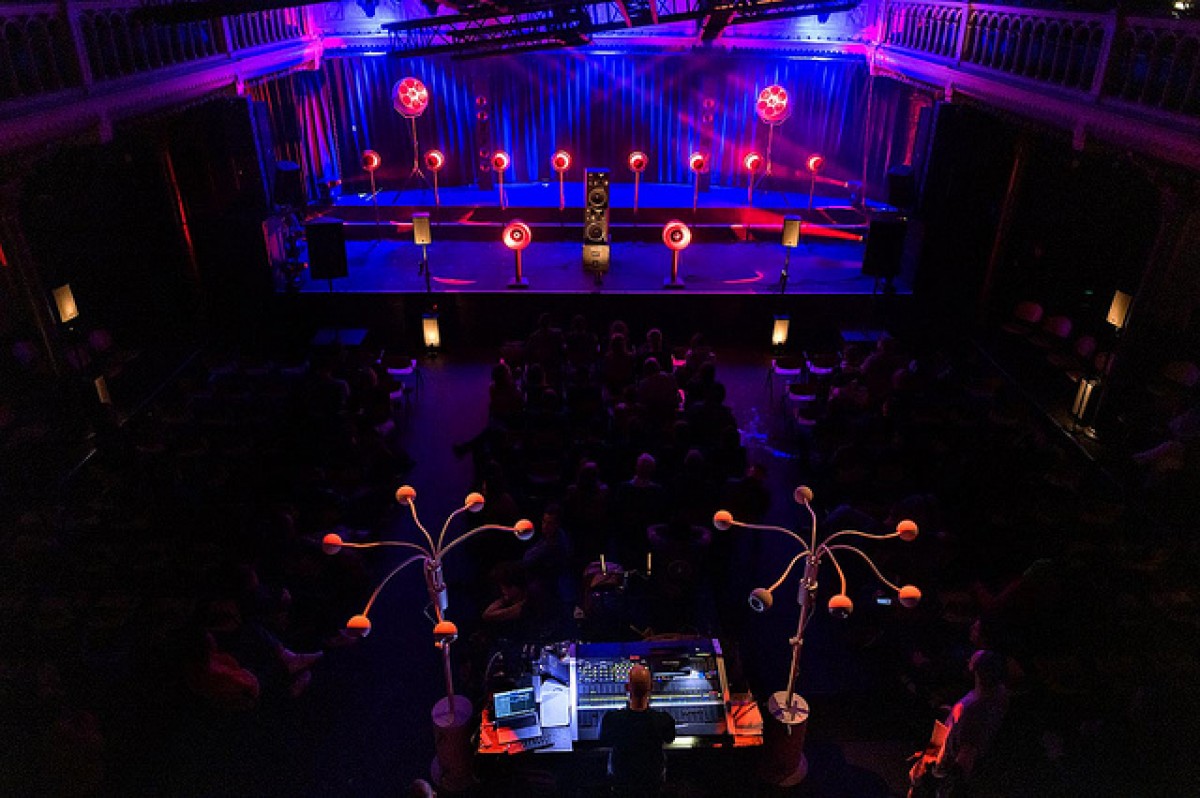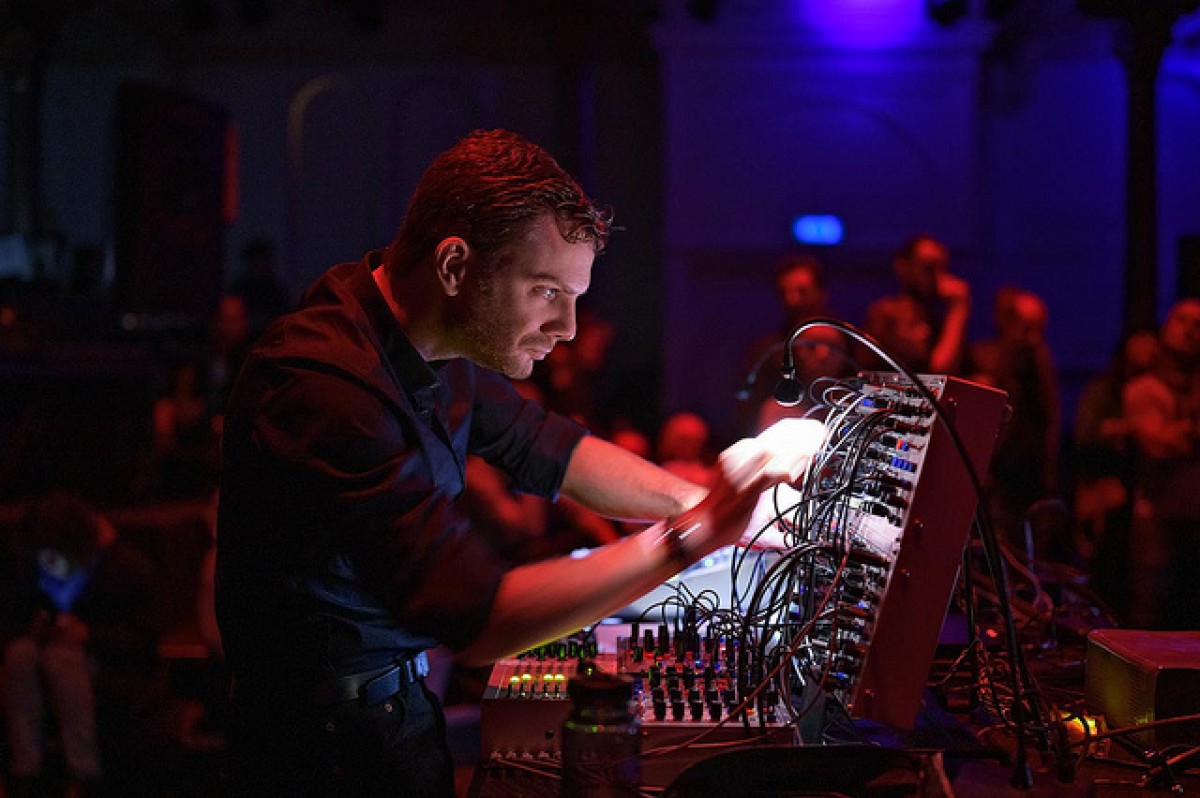Friday 15 March 14:27
by Anya Potashova
For its 25th Anniversary Sonic Acts brought back the Acousmonium to Amsterdam, 11 years since the festival first featured this loudspeakers orchestra. During the opening event at Paradiso performances of historical and newly composed electronic music pulled out messages from the darkness.
The journey back into time started with a composition of Dick Raaijmakers, the Dutch pioneer of electronic music without whom ‘no one of us would be here’ as Lucas van der Velden, director of Sonic Acts, stated in his welcome speech. This dedication as well as the following performances didn’t so much just honour the past – as one would expect from the static monuments of the Acousmonium speakers – but focused on the performative space presented by the whimsical objects on the podium. The listeners attention was not focused on a performer on stage but on a nonhuman orchestra of loudspeakers, and instead of consuming a scene-oriented concert, the listener was able to fully immerse into a spatial musical journey without the help of visuals.

BJ Nilsen with ORE at Sonic Acts 2019: Festival Opening – The Acousmonium, on Thursday 21 February at Paradiso. Photo by Pieter Kers.
The Acousmonium was designed in 1974 by François Bayle to be ‘another utopia, devoted to pure listening’. 80 (or more) speakers of different sizes enable the acousmatic composer/musician to play with distance and sound placement. It served right both for
Beatriz Ferreyra and
Keith Fullerton Whitman whose performances were full of sonic passages rushing from one wall to another, as well as to the centered and concentrated sounds of the mirrored cello performances by
Okkyung Lee (solo) and the duo of
Anthea Caddy and Judith Hamann. The concert resembled a utopic acousmatic bliss even more with
Thomas Ankersmit’s new composition exposing the audience’s ears to the unique tones of otoacoustic emissions, which seemed to intrude into the core of one’s brain.
Even if imagery wasn’t provided to a listener, still, the sound system of the Acousmonium suggested cinematic events being dug out from the space. While during Beatriz Ferreira performance sonic images helped to connect different passages, Thomas Ankersmit let the sound itself fill the room to the fullest and the imagined visual metaphors could be considered an escape from the sonic tension. The tension wasn’t created by ambient sounds, listening to which one could have followed the mood swirls and counted visual associations accidentally, but by an epic experience that made the viewer imagine a world.

Thomas Ankersmit with Perceptual Geography at Sonic Acts 2019: Festival Opening – The Acousmonium, on Thursday 21 February at Paradiso. Photo by Pieter Kers.
Staying away from entering a totally subjective mode where imagery associated with the Acousmonium sounds was the clay to compose the Universe, one couldn’t escape the opposition of unchanging objects on stage and the performative setting that was altering every second in one’s mind. The organizers of Sonic Acts strived to compile the listener’s experience in such a way that the senses were provoked to expand the understanding of the waves of sound. In this case, the collaborative efforts of the Acousmonium performers and the audience may have given birth to a new vision of today – that of a cooperative, ever-altering and unknown-mining self.




